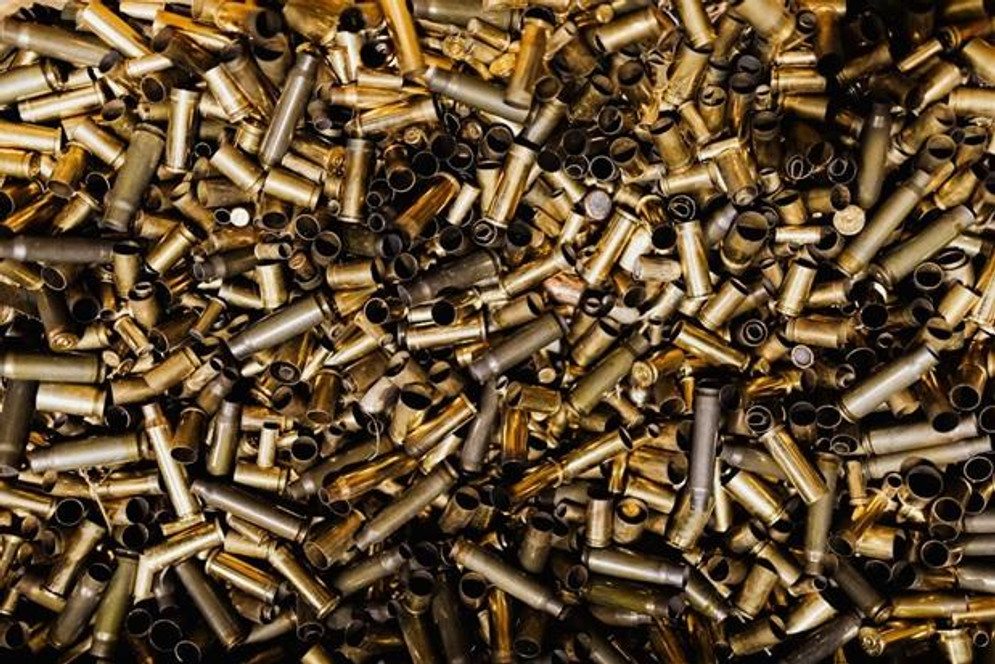Check the American Eagle .223 at the previous link. This ammo is consistent, accurate, reliable, and affordable.
Perhaps just as importantly, it’s loaded into reloadable brass cases. That means that, with proper care, cleaning and resizing, you can reload these cases several times.
Being able to reload brass is a big selling point, recycling some of the value of the initial purchase, making shooting as a hobby or a sport more cost-effective, and most importantly, giving shooters some autonomy over subsequent load specifics.
But not all brass, after it’s been fired, can or should be reloaded. Brass should always be inspected - before even attempting to clean and resize.
Brass cases also have a useful lifespan. Once they’ve lived it, they should be discarded. Here are some things to look out for which indicate quite clearly that a cause should not be reloaded.
Dented Cases
A case may become dented for any of a variety of reasons. A common one, especially for .223 ammo fired from a semi auto, is if the case jams between the bolt carrier group and the upper/barrel.
Stovepipes like this can dent brass, after which point the dent will serve as a weak point that may become a bulge or a rupture later on.
Resizing can address some dents, but as a general rule, if you have a dented case, put it in the discard pile .
While dented cases might produce some of the lesser instances of concern for reloaders, it’s better to err on the safe side and proceed without using any of your cases that do happen to be dented.
Cracked Cases
Any cracked cases should be immediately discarded because a cracked case is a precursor to a much more disastrous catastrophic failure.
A crack may not be an issue with the chamber or the ammo manufacturer, but may arise as a result of brass cases that are just too brittle. One of the great things about brass is that it is a fairly flexible and malleable metal. Others are more brittle and are not used because they are predisposed to rupturing.
Bulged Cases
Bulges are like dents and much more concerning. In the case of a bulge, what you have is a portion of the case that has experienced far too much pressure at a certain point of the case body and nearly exceeded its limits.
When a casing bulges, it may be because too much propellant was used, or that there was not adequate support from the chamber, causing the casing to stretch and bulge out.
Chances are, the next time you fire a bulged case, it’s going to split or completely rupture, something you definitely want to avoid.
Split Necks
A split neck is a specific type of case crack that occurs at the neck of the casing where the bullet is seated.
There are numerous reasons why a split cartridge neck could occur. One is if the brass is too hard. Again, here, a certain degree of softness paired with malleability is necessary to ensure that the case expands properly without cracking.
A neck can also split if the cartridge is loaded with too much propellant, as well as if the cartridge is not adequately supported by the chamber.
Necks also start to split after a certain number of load and reload sequences, as a result of resizing. Doing so too many times will push the metal past its yield point, and it will crack.
Blown Primers
Primers can be blown out of the case if the pocket is too wide, but they can also get blown out if you use too much propellant. Double check your load data, and don’t use that cartridge with a blown primer again; you won’t be able to properly seat the next one anyway.
If It’s Too Dirty, Throw It Out
One last note: tumbling and cleaning are both normal processes of preparing cartridges for reloading. At a certain point, if the brass is just too dirty or is starting to show signs of corrosion, just give it up and get fresh brass. It’s not worth the work it takes to bring it back to speed.
Final Note on Reloading

It’s also worth noting that one potential problem with reloading has to do with loading cases for chambers for which they were never destined.
For instance, there are slight differences in load data and chamber and casing metrics that make .223 Remington slightly distinct from 5.56x45mm NATO.
If you attempt to load a .223 Remington casing according to 5.56 NATO load specs and then fire that in a 5.56 NATO chamber, you might have a casing failure.
The point is, only use a casing with the chamber for which it was designed, and follow the instructions of the handloading manual you’re using to the letter.
Stock Up on American Eagle .223 Ammo
Here for American Eagle .223 ammo with reloadable brass cases? Check out our full collection of .223 ammo, which represents top brands like Federal Premium, Remington, Norma, and even SinterFire, and stock up your ammo cans today.

